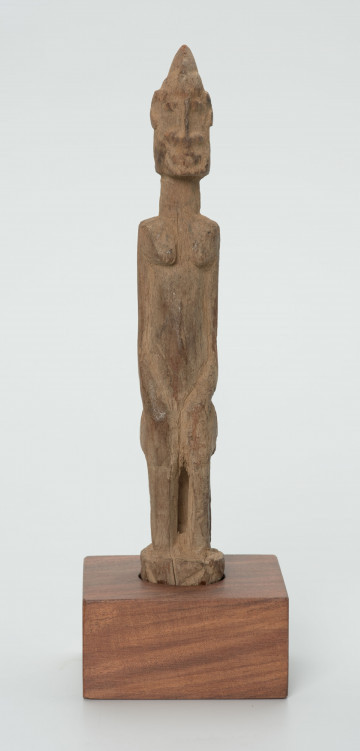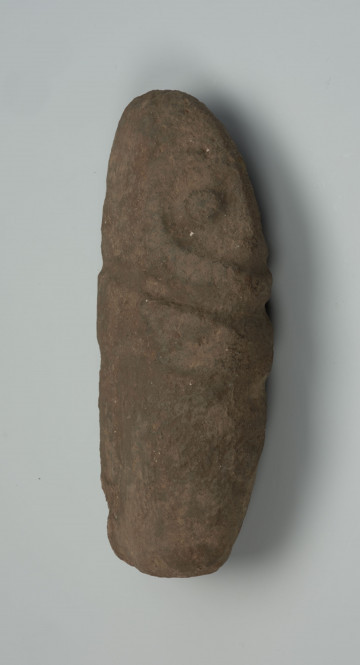
Figurine - ancestor
między 1901 — 1950
National Museum in Szczecin
Part of the collection: Collection of Dogonian art
The most popular representations in Dogon art are figural depictions of ancestors. They can represent deceased real and mythical relatives, male, female and hermaphrodites. This is because the Dogon have a strongly developed cult of ancestors. In their tradition, two levels of ancestors can be distinguished: eighty men and women, long dead, descended from the eight descendants of the first couple and all the other dead. The first eighty ancestors were responsible for establishing all the traditions and rules, the whole order of things still functioning today, and all the others had to follow them and make sure they survived unchanged. Figures representing ancestors are usually placed on altars dedicated to them. They are stylistically very diverse. Their size alone is surprising, as there are figures of ancestors both very large, exceeding their natural size, and quite small, counting only a few centimetres. The repertoire of gestures of the carved images of ancestors is also manifold and includes figures standing, kneeling, sitting or riding a horse, raising one or both hands in various poses and holding or carrying objects or attributes related to a specific sex, age, occupation or social status. Some of the figures are softly sculpted, delicately detailed, while others have been reduced to abstract, geometric shapes and are devoid of any reference to human anatomy. Some of them have a carefully smoothed surface, others are covered with layers of sacrificial substances sometimes so thick that they obscure the sculptural form. Despite these differences, Dogon art has its own recognisable style, appreciated by lovers of African art.
Ewa Prądzyńska
Author / creator
Dimensions
cały obiekt: height: 15,2 cm, width: 2 cm
Object type
figure
Creation time / dating
Creation / finding place
Identification number
Location / status

między 1901 — 1950
National Museum in Szczecin

między 1951 — 2000
National Museum in Szczecin

między 1951 — 2000
National Museum in Szczecin
DISCOVER this TOPIC
Museum of King Jan III's Palace at Wilanów
DISCOVER this PATH
Educational path